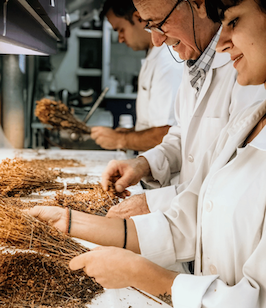The influence of the Ayuredian Fire Pitta Dosha on Human Summer
According to the Ayurvedic healing system, during the summer months, with intense sunshine and significantly increasing temperatures, it is the season when the dosha pitta prevails in nature and in our body.
To understand this particular dosha, we must first know the elements of water and fire, which are the basic ingredients that create pitta.
FIRES – AGNI
Fire represents combustion and light, we could say that it is the internal generator of the body that produces energy, just as the sun plays the role of the generator for the planet to produce energy. Thus, fire represents every form of energy, such as solar, hydroelectric, atomic, electromagnetic and from this we see the unique ability it has to release from itself, vital energy.
With the discovery of fire, man began to cook his food, keep warm, create communities and subsequently significantly improved the quality of his life. In this way, fire creates a sense of security, certainty, prosperity and longevity.
Fire is perceived through form and color, and therefore the eyes and fire are two inseparable factors. It is connected to the sense of sight, since the eyes are the means by which our mind processes light in order to experience the material world.
The characteristics of fire are: warm, light, dry, sharp, luminous, expansive, penetrating, transformative and its movement is upward and continuous.
WATER – JAL
Water is life itself, since our body is made up of 65% - 70% water and we cannot live without it for more than a few days. It is connected to survival, since since ancient times people chose to live in a place where there was a river or lake. It protects the body from the heat of fire and is the element that softens pain and inflammation.
According to Ayurveda, the place of water in the body is in the lungs, in each cell, in the secretions of the organs, the moisture of the eyes and oral cavity, and the reproductive fluids.
Water is the element that activates the tongue to recognize the six different tastes: sweet, sour, salty, bitter, pungent, and astringent.
The characteristics of water are: wet, cold, heavy, steady, diffuse, soft, sluggish and cloudy.
How Pitta Dosha is created
These two elements, fire and water, always work together and cooperate, constantly interacting at every moment. Water is always next to fire in order to moderate its intensity.
Thus, the new energy (dosha) that results from this interaction of the two elements is called pitta and its characteristics are: warm, moist, penetrating, oily, light and expansive.
Its mission is to maintain a constant body temperature. It is located in our stomach and is responsible for the digestion and absorption of food, the metabolic function of the body, as well as mental acuity since it helps us to process with clarity all the messages we receive from the outside world.
Summer and Pitta dosha
In the summer, with the heat and intense sun, pitta tends to increase.In order to maintain it within the desired limits, it would be useful to add refreshing foods to our diet such as: fruits, melon, watermelon, peaches, nectarines, grapes and to consume abundant quantities of vegetables such as: green beans, peppers, tomatoes, cucumbers, greens, okra, eggplants, zucchini, corn and fresh coriander, mint in salads.
The flavors we prefer to have frequently on our plate are sweet such as: cereals, figs, plums, avocado, coconut water, fennel, licorice, as well as bitter such as: lettuce, spinach, leafy vegetables and green tea.
Some of the foods that increase pitta are: onions, garlic, chocolate, hot peppers, pepper, tahini, carob, sour milk, which should be consumed in moderation during the summer season.









Leave a comment